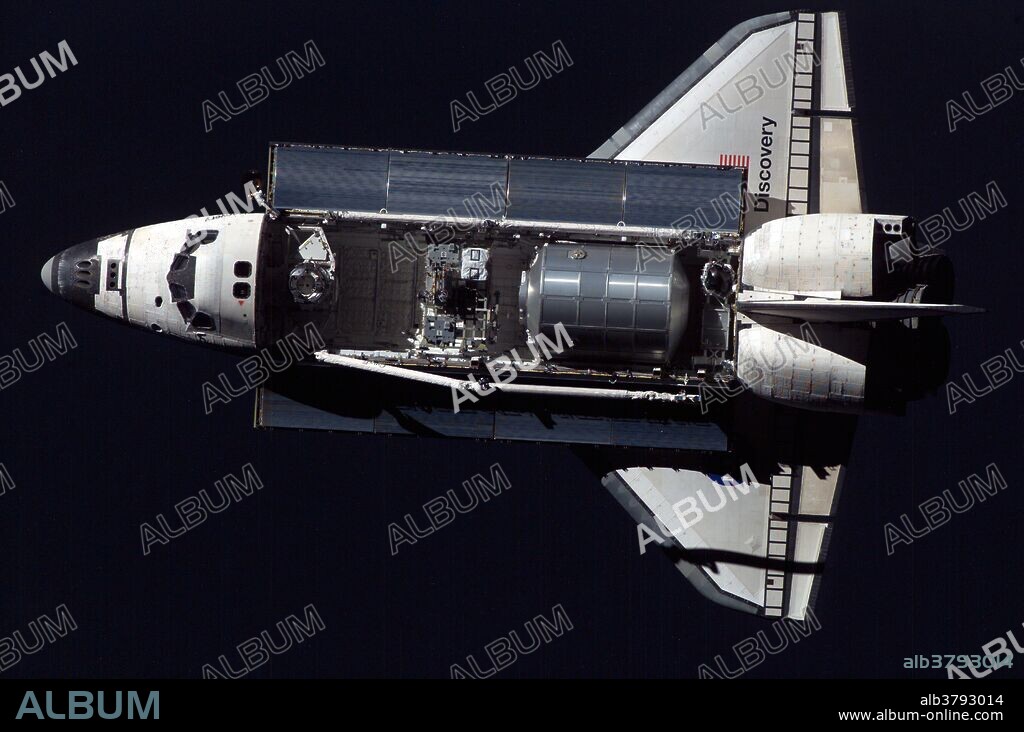alb3793014
STS-114, Space Shuttle Discovery, ISS Image

|
Add to another lightbox |
|
Add to another lightbox |



Buy this image.
Select the use:

Title:
STS-114, Space Shuttle Discovery, ISS Image
Caption:
Discovery, as seen from ISS during rendezvous and docking operations on the morning of July 28. STS-114 was the first "Return to Flight" Space Shuttle mission following the Columbia disaster. Discovery launched on July 26, 2005, at 10:39 EDT. Discovery delivered supplies to the ISS, but the major focus of the mission was testing and evaluating new flight safety techniques, and inspection and repair techniques. The crewmembers used the new Orbiter Boom Sensor System - a set of instruments on a 50 foot extension attached to the Canadarm. The OBSS instrument package consists of visual imaging equipment and a Laser Dynamic Range Imager to detect problems with the shuttle's Thermal Protection System. The crew scanned the leading edges of the wings, the nose cap, and the crew compartment for damage. Analysis of the launch footage showed debris separating from the external tank during ascent; the issue that had set off the Columbia disaster. NASA decided to postpone future shuttle flights pending additional modifications to the flight hardware. Flights resumed a year later with STS-121.
Credit:
Album / NASA/Science Source
Releases:
Model: No - Property: No
Rights questions?
Rights questions?
Image size:
4500 x 2984 px | 38.4 MB
Print size:
38.1 x 25.3 cm | 15.0 x 9.9 in (300 dpi)
Keywords:
2000S • 2005 • 21ST CENTURY • 21ST • 21TH CENTURY • AEROSPACE • AMERICA • AMERICAN • ASTRONAUTICS • CELEBRITIES • CELEBRITY • DISCOVERY • DOCK • DOCKING • EVENT • EVENTS • FAMOUS PEOPLE • FAMOUS • FLIGHT • HISTORIC • HISTORICAL • HISTORY • IMPORTANT • INTERNATIONAL SPACE STATION • ISS IMAGE • ISS • MANNED SPACE FLIGHT • NASA • NATIONAL AERONAUTICS AND SPACE ADMINISTRATION • NOTABLE • ORBITER VEHICLE • ORBITER • RENDEZVOUS • RETURN TO FLIGHT • SCIENCE • SPACE EXPLORATION • SPACE FLIGHT • SPACE PROGRAM • SPACE SHIP • SPACE SHUTTLE PROGRAM • SPACE SHUTTLE • SPACE TRANSPORTATION SYSTEM • SPACE TRAVEL • SPACECRAFT • SPACEFLIGHT • SPACESHIP • STS • STS-114 • TECHNOLOGICAL • TECHNOLOGY • UNITED STATES • US • USA • VEHICLE • WELL-KNOWN
 Pinterest
Pinterest Twitter
Twitter Facebook
Facebook Copy link
Copy link Email
Email
